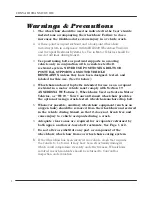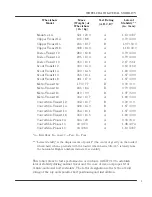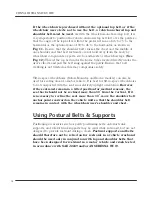
2
CONVAID
TRANSIT GUIDE
1.
The wheelchair should be used as indicated in the User’s Guide
instructions accompanying the wheelchair. Failure to do so
increases the likelihood of serious injury in a vehicle crash.
2.
A three-point occupant restraint and a four-point wheelchair
tiedown system in compliance with SAE J2249 Wheelchair Tiedown
and Occupant Restraint Systems for Use in Motor Vehicles should be
used at all times during transit.
3.
Use positioning belts or postural supports in a moving
vehicle only in conjunction with a crash-tested belt
restraint system. NEVER USE POSITIONING BELTS OR
POSTURAL SUPPORTS AS MOTOR VEHICLE
RESTRAINTS, unless they have been designed, tested, and
labeled for this use. (See #4 below.)
4.
Wheelchair-anchored lap belts intended for use as an occupant
restraint in a motor vehicle must comply with Section 19
ANSI/RESNA WC/Volume 1, Wheelchairs Used as Seats in Motor
Vehicles, or “WC19.” Your Convaid transit wheelchair provides
the option of using a crash-tested, wheelchair-anchored lap belt.
5.
Whenever possible, auxiliary wheelchair equipment (such as an
oxygen tank) should be removed from the wheelchair and secured
in the vehicle during transit so that it does not break free and
cause injury to vehicle occupants during a crash.
6.
Adequate clear zones are required for occupants restrained by
both upper- and lower-torso belt restraints. See Figs. 1 & 2.
7.
Do not alter or substitute any part or component of the
wheelchair, wheelchair frame or wheelchair seating system.
8.
If the wheelchair has been involved in a vehicle crash that requires
the vehicle to be towed, it may have been structurally damaged,
which could compromise its safety and effectiveness. Wheelchairs
involved in such incidents should be returned to Convaid for
inspection and evaluation.
Warnings & Precautions




































